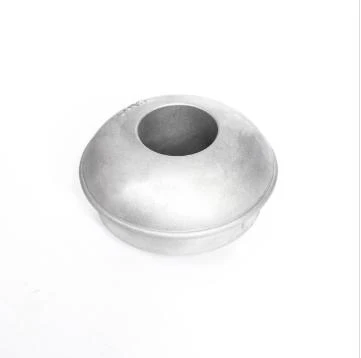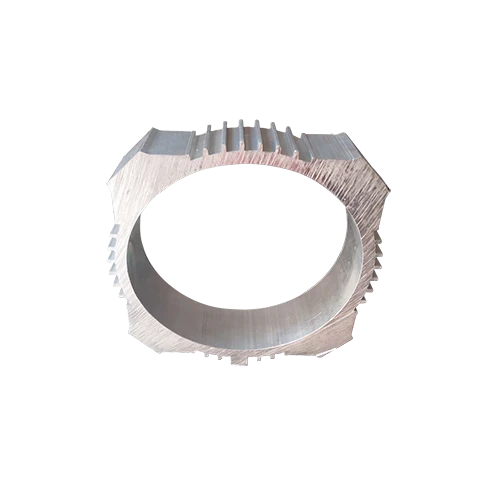Mobile:+86-311-808-126-83
Email:info@ydcastings.com
High-Efficiency Sand Preparation in Foundry Reliable Casting Preparation Stainless Steel Sand Casting Foundry
- Introduction to sand preparation in foundry
and its significance - Technological advancements in casting preparation processes
- Manufacturer comparison: evaluating sand preparation systems
- Custom solutions for stainless steel sand casting foundries
- Application case studies in various industries
- Key data and performance analysis for optimizing foundry operations
- Conclusion: Emphasizing the role of sand preparation in foundry efficiency

(sand preparation in foundry)
Understanding Sand Preparation in Foundry Operations
The process of sand preparation in foundry settings stands as a pivotal backbone for the overall success of the casting industry. Effective sand preparation directly affects casting quality, yield, cost, and sustainability. The primary goal is to provide consistent, high-quality molding materials for both ferrous and non-ferrous foundries, with a particular focus on stainless steel sand casting foundry operations.
From the selection and blending of raw sands to the precise addition of binding agents and the maintenance of optimal moisture content, each aspect of sand preparation plays a role in achieving defect-free castings. According to a 2023 international foundry survey, more than 68% of reported casting defects in ferrous foundries could be traced back to improper sand preparation, highlighting its critical impact in day-to-day foundry operations.
Additionally, the sand preparation process involves reclaiming and recycling sand, a practice that reduces resource consumption and supports sustainability efforts. In short, mastering the techniques of casting preparation ensures adherence to tight dimensional tolerances, surface finish requirements, and physical property specifications for end components.
Technological Advancements in Casting Preparation Processes
In recent years, a surge in technological innovations has transformed traditional sand preparation methods. Fully automated sand preparation plants integrate intelligent control systems, real-time monitoring, and data analytics to regulate parameters such as sand temperature, binder content, and moisture precision.
Modern mixers with programmable logic controllers (PLCs) enable adaptable mixing cycles for different alloy requirements. Inductive sensors and load cells provide immediate feedback, ensuring the homogeneity of the sand mixture. These advances reduce labor intensity, minimize process variability, and support high-volume production in the competitive landscape of the foundry sector.
For stainless steel sand casting foundry use, humidification systems and modular sand coolers maintain tight process control, preventing thermal expansion issues and surface defects. Remote diagnostic capabilities drive predictive maintenance, thus reducing downtime by up to 22% according to a 2022 industrial poll. The synergy between automation, data-driven insights, and material science is raising the bar for casting preparation standards worldwide.
Manufacturer Comparison: Evaluating Sand Preparation Systems
Selecting the optimal sand preparation solution requires evaluating numerous manufacturers on parameters such as throughput, energy efficiency, adaptability, and maintenance requirements. The table below presents a comparative analysis of leading suppliers.
| Manufacturer | Maximum Capacity (tons/hr) | Energy Consumption (kWh/ton) | Automation Level | Annual Maintenance Cost ($) | Customizability | Warranty (years) |
|---|---|---|---|---|---|---|
| SandMaster Pro | 35 | 19.6 | Full | 13,500 | High | 3 |
| CastFlow Systems | 28 | 17.4 | Semi | 10,200 | Medium | 2 |
| EcoFoundry Tech | 32 | 15.3 | Full | 11,800 | High | 4 |
| FlexiMix Industrial | 30 | 20.1 | Semi | 9,900 | Medium | 2 |
Examining the above data reveals that manufacturers offering full automation with advanced controls, like SandMaster Pro and EcoFoundry Tech, tend to achieve lower energy consumption and higher customization. While initial investment and annual maintenance costs are a consideration, their ability to scale seamlessly and reduce process deviations offers significant operational value for modern stainless steel sand casting foundry environments.
Custom Solutions for Diverse Foundry Requirements
No two foundries operate under identical conditions. Custom sand preparation systems are engineered to account for the nature of the raw sand, desired casting quality, space constraints, and the specific metallurgical requirements of alloys such as stainless steel, aluminum, and iron.
Customizable features include modular sand storage silos, variable-speed mixers, precision water dosing, additive feeders, and integrated sand testing labs for real-time feedback. For instance, high-performance stainless steel sand casting foundry systems integrate robust abrasion-resistant components to address the higher wear rates associated with advanced alloys.
Solutions can also be tailored for greenfield projects or the retrofitting of existing plants. Integration with legacy MES/ERP systems is offered to streamline production flow, ensure full traceability, and support industry 4.0 transformation goals. Through close collaboration with leading vendors, foundries can develop scalable, future-proof sand preparation lines that directly address their most demanding operational needs.
Application Case Studies in Sand Preparation
Implementation of state-of-the-art sand preparation has yielded remarkable results in various sub-industries. Consider a North American automotive foundry that transitioned from conventional to automated sand blending: scrap rates halved from 7% to 3.5%, while mold cycle times shortened by 15%. This drove a notable cost saving of approximately $380,000 annually.
In another case, a stainless steel sand casting foundry serving the medical device sector adopted precision moisture control and binder blending. Post-upgrade, X-ray defect rates in complex thin-wall castings fell from 12% to 5.6%, positioning them as a class-leading supplier recognized for superior product consistency.
Aerospace applications benefit indirectly through enhanced surface finish and tensile properties, as automated sand batch tracking ensures strict adherence to certification standards. Investments in casting preparation not only strengthen process robustness but also elevate foundries into premium market segments.
Key Data and Performance Analysis for Optimizing Foundry Operations
Data-driven optimization is the cornerstone of modern foundry success. As depicted below, key metrics amplify the role of advanced sand preparation in driving operational excellence:
| Metric | Conventional System | Automated System | Change (%) |
|---|---|---|---|
| Defect Rate (%) | 8.4 | 4.2 | -50 |
| Sand Reuse Rate (%) | 56 | 82 | +46 |
| Cycle Time (min) | 22 | 17 | -23 |
| Binder Consumption (kg/ton) | 19.2 | 15.1 | -21 |
| Operator Requirement | 5 | 2 | -60 |
The data illustrates that upgrading to advanced casting preparation systems reduces defects, enhances sustainability through higher sand reuse rates, boosts cycle efficiency, and minimizes raw material waste. These quantifiable improvements translate directly into competitive advantage, cost leadership, and environmental stewardship.
Conclusion: The Critical Role of Sand Preparation in Foundry Efficiency
In summary, the sophistication of sand preparation in foundry environments directly correlates with casting quality, speed, and economic performance. Technological innovation, tailored solutions, and data-centric process control are driving a new era in casting preparation. Benchmarking manufacturers and leveraging case study proven strategies equip foundries to navigate evolving market challenges and maintain a decisive edge in global manufacturing ecosystems.
Stainless steel sand casting foundry professionals, by embracing comprehensive sand preparation systems, can expect measurable gains in product uniformity, cost efficiency, and regulatory compliance. This pivotal investment forms the cornerstone for sustainable growth and technological leadership in the broader casting industry.

(sand preparation in foundry)
FAQS on sand preparation in foundry
Q: What is sand preparation in foundry?
A: Sand preparation in foundry refers to the process of mixing, conditioning, and preparing sand for use in casting molds. This ensures optimal mold properties and desired casting quality. Proper preparation is crucial for successful metal casting results.
Q: Why is sand preparation important in stainless steel sand casting foundry?
A: Proper sand preparation ensures the mold has the right strength, permeability, and surface finish for casting stainless steel. It helps prevent casting defects and increases efficiency. This leads to higher quality finished products.
Q: What materials are typically used during sand preparation in foundry?
A: The primary materials include silica sand, clay (like bentonite), water, and additives to enhance mold properties. These are thoroughly mixed to meet casting requirements. Additives may vary based on the type of metal being cast.
Q: How does sand preparation affect casting preparation?
A: Sand preparation directly impacts casting preparation by providing molds with proper characteristics for metal pouring. Well-prepared sand delivers better surface finish and dimensional accuracy. It also minimizes the risk of casting defects.
Q: What equipment is used in sand preparation in foundries?
A: Common equipment includes sand mixers, mullers, aerators, and sand cooling systems. These machines optimize the sand’s consistency and moisture content. Automated systems are often used in modern sand casting foundries for efficiency.
-
What Makes Stainless Steel Pump Casting Essential for Modern Industries?NewsJul.14,2025
-
Revolutionize Your Engine Maintenance with Premium Aluminum and Cast Iron ComponentsNewsJul.14,2025
-
Precision Flow Engineering Starts with the Right Pump ComponentsNewsJul.14,2025
-
Maximize Efficiency: Explore Reliable Containment and Crop SolutionsNewsJul.14,2025
-
Discover Superior Performance with Advanced Turbo ComponentsNewsJul.14,2025
-
Boost Fluid Dynamics with Precision-Engineered Pump ComponentsNewsJul.14,2025











